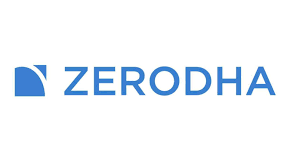Tata Motors’ recent announcement on March 4 regarding its intention to demerge its passenger vehicles and commercial vehicles businesses into two separately listed entities is aimed at unlocking value for both segments, particularly the passenger vehicle (PV) business, which is anticipated to require larger investments as it expands its electric vehicles (EV) portfolio, analysts noted.
The company has been outlining the roadmap for this demerger for some time now. The PV unit was separated into a distinct subsidiary effective from January 2022, and within that, the passenger electric mobility business was further segregated into another subsidiary – Tata Passenger Electric Mobility Limited (TPEML) in December 2021.
Highlighting the rationale behind the demerger, Tata Motors stated that over the past few years, the commercial vehicle (CV) and PV businesses, including its EV unit and Jaguar Land Rover (JLR) businesses, have been pursuing distinct growth strategies. Since 2021, these businesses have been operating independently under their respective CEOs.
While acknowledging limited synergies between the CV and PV businesses, Tata Motors emphasized significant synergies across the PV, EV units, and JLR, particularly in areas such as EVs, autonomous vehicles, and vehicle software, which the demerger aims to capitalize on. The demerger process is expected to take 12-15 months to complete, with Tata Motors shareholders receiving one share in each of the demerged companies.
According to an investment banker, speaking anonymously, the demerger will provide a clearer investment thesis for investors interested in the EV theme and enhance the attractiveness of the PV segment for investors. Separating the two businesses will also offer Tata Motors greater flexibility in engaging strategic partners in the future for the passenger and EV segments.
Deven Choksey, Managing Director of KR Choksey Shares and Securities, highlighted the substantial capital expenditure requirements for all three businesses moving forward, particularly in the EV segment, which typically commands higher price-to-earnings multiples in the market. He also emphasized the growth prospects in the CV segment, driven by factors like infrastructure development and government initiatives.
Despite a declining overall market share in certain segments, Tata Motors remains a significant player, commanding a 42 percent market share in the CV segment for FY23. On the PV front, the company has witnessed a remarkable turnaround in operations, with market share increasing from below 5 percent in fiscal 2020 to 13.5 percent in fiscal 2023, driven by product launches and enhanced reliability.
Analysts also noted that the demerger could provide flexibility for the companies to raise funds in the future, particularly in the competitive passenger EV segment, where Tata Motors currently holds a leading position. The company has been streamlining its structure to unlock value from investments, including recent stake sales in Tata Technologies Ltd (TTL) and discussions to list Tata Autocomp Systems (TACO), in which Tata Motors owns a stake.
Overall, the demerger announcement reflects Tata Motors’ strategic efforts to optimize its business structure, enhance focus on growth areas, and unlock shareholder value in a dynamic automotive landscape.


